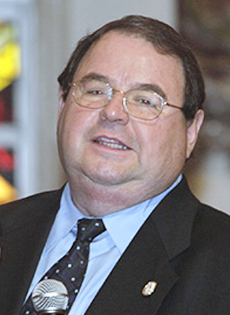
The Eucharistic celebration after Vatican II
Monday, August 26, 2019
*Rogelio Zelada
April 3 of this year, 2019, marked the first 50 years of the solemn affirmation of the work of the liturgical renewal approved by the Conciliar Fathers and signed by Pope St. Paul VI. The “Missale Romanum ex decree Concilii Oecumenici Vaticani II instauratum” is the result of long days of work by the Pontifical Council to implement the general norms emanating from “Sacrosanctum Concilium,” the Constitution on the Liturgy.
The new Missal carried out the guidelines of the Council for the reform of the liturgy of the Mass, as requested by Sacrosanctum Concilium. “The rite of the Mass is to be revised in such a way that the intrinsic nature and purpose of its several parts, as also the connection between them, may be more clearly manifested, and that devout and active participation by the faithful may be more easily achieved. For this purpose the rites are to be simplified, due care being taken to preserve their substance; elements which, with the passage of time, came to be duplicated, or were added with but little advantage, are now to be discarded; other elements which have suffered injury through accidents of history are now to be restored to the vigor which they had in the days of the holy Fathers, as may seem useful or necessary.” (SC 50)
The new Missal did not contain readings from the Bible, as did the Tridentine, but an excellent catalog of readings from Sacred Scripture that, collected in new lectionaries, would increase not only the number of Sunday readings and recover the Psalmody, but also distribute these in three years, framed by the synoptic Gospels.
The new Missal of Paul VI demonstrates a great pastoral concern for the assembly, the first actor in the celebration; a community of believers headed by Christ, whose presence engulfs it completely. The people of God are called to fully, actively and consciously participate in the holy sacrifice of the Mass; the celebration of the Eucharist appears as the banquet of the assembly presided by the bishop or the presbyter, representatives of the head, the living Christ. The presence of the bishop in a ceremony should no longer imply greater solemnity in the rite, but rather a clearer expression of the mystery of the Church, “which is the sacrament of unity.” (SC 26)
The liturgical reform proposes the appointment of ministers and ministries given to the laity that will respond to the structure of the celebrating community. It stresses the importance of the lector in the liturgy of the Word, the cantor, the psalmist and the ministers of the altar, with the possibility of creating new ministries as appropriate and necessary or as required by the needs of the local church.
The fundamental intention of the Council was to recover the original sources that give meaning to the rites of Catholic worship; highlight what is essential, eliminating gestures added throughout history; and recover those forms and signs that were lost. In order to do so, it rebuilt the celebratory framework using the old Christian basilicas as a functional model. The altar of sacrifice was separated from the altarpiece to express its central place in the Eucharistic celebration, a stand-alone table where the priest can celebrate facing the people, thus enriching the dialogue and communication between the presider and the assembly. The celebrant’s chair took a privileged place to make visible the presence of Christ in the bishop or the presbyters, with seats for the deacons on each side; and the ambo to proclaim solemnly the holy Word of God; all in all an extraordinary liturgical framework to draw attention to the real presence of Christ in these visible and permanent signs.
All done as requested by the guiding principles of the Council, which presents the liturgy of the Church as “an exercise of the priestly office of Christ.” Christ is the center, the crucified and risen Lord who gives us authentic life. The liturgy is nothing other than the great believing celebration of the paschal mystery of Christ; the tremendous mystery that, over time and history, keeps the constant presence of the Lord in his Church, which invokes her Lord and, through him, worships the Father in heaven.
In his convocation speech to Vatican II, St. John XXIII recognized that there are men of good will but of a closed spirit, for whom everything is bad in our time; they believe that all past times were better. “In these modern times, they can see nothing but prevarication and ruin. We feel we must disagree with those prophets of gloom, who are always forecasting disaster. In the present order of things, Divine Providence is leading us to a new order of human relations.” The Holy Father sensed that there would be dissension and disagreement with the purpose, work and results of the Council. Vatican I had them, which resulted in the sectarian split of some German and French bishops and the emergence of the “Old Catholics,” a church that has been called the “liberal Catholics” in America, already far removed from the orthodoxy of the Roman Church.
St. Paul VI had to conclude the conciliar tasks and promulgate its great constitutions, documents and decrees. The guiding principles of the Constitution on the Sacred Liturgy, “Sacrosanctum Concilium,” consider the liturgy as the exercise of the priesthood of Christ, the summit and source of the Christian life, which requires the whole Church to participate fully, consciously and actively. It manifests the nature of the Church as essentially a community with substantive unity though not rigid uniformity; that can preserve the healthy tradition and, at the same time, the legitimate progression of the language of faith. It is theology made prayer that, having Christ as the center, signifies and realizes the sanctification of the men and women who make up the Church.
St. John XXIII bequeathed his style and spirit to the liturgical reform. He was a saint of enormous common sense and very broad vision who, despite his advanced age, filled with fresh air and a spirit of renewal the old structures and traditions that so burdened the image of ecclesial institutions. It is said that, newly elected as pope, he asked his secretary to invite some friends to dinner with him in the apostolic house. The secretary replied, “Impossible, the Holy Father should always eat alone.”
Pope Roncalli asked in amazement, “What is the reason for this?"
The answer: “Because one of your predecessors instituted it that way.”
“And was he a pope like me?”
“He certainly was.”
“Well, as I am also Vicar of Christ, as that pope was, I annul it right now. So tomorrow and from now on, the pope will not eat alone anymore.”
That is the richness of the Church, the ability to do like that father of a family in the Gospel, who is able to take both the old and the new out of his large chest, for the benefit of the people of God.


Comments from readers